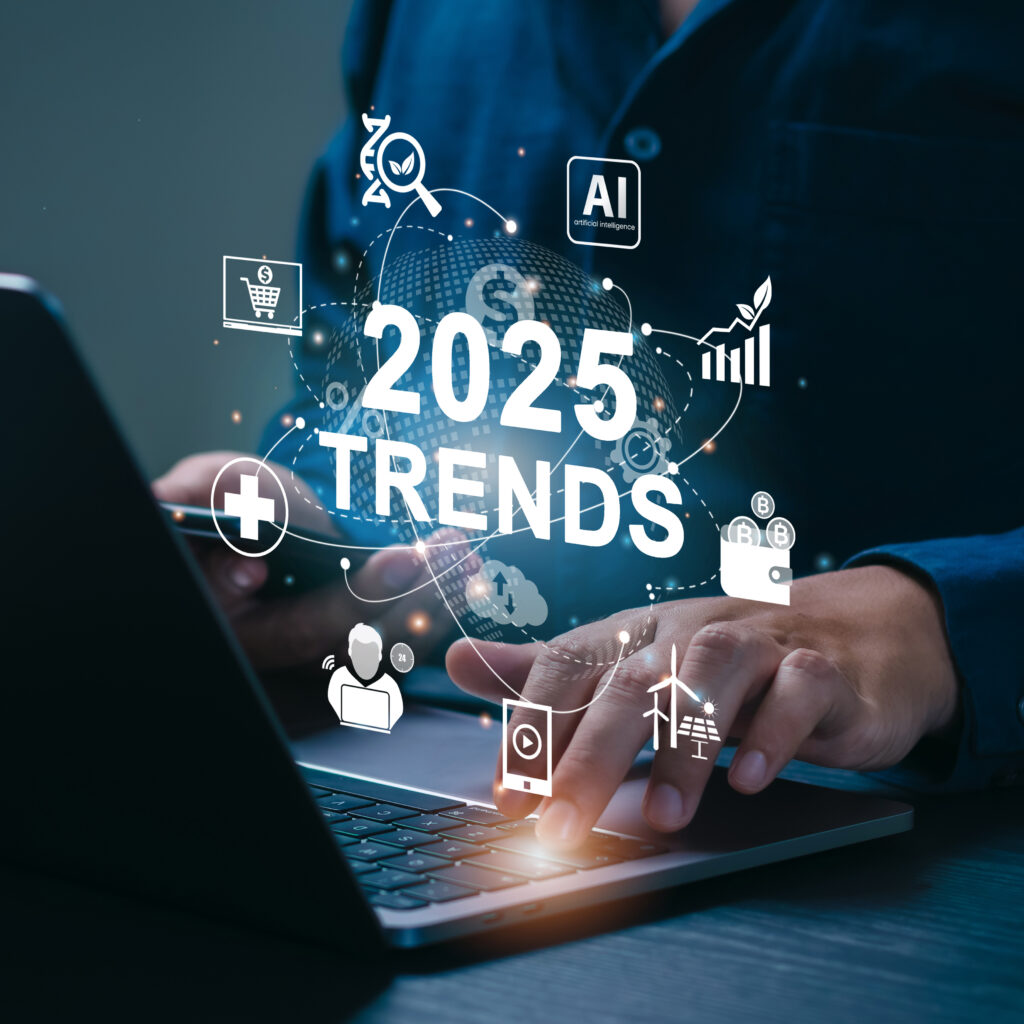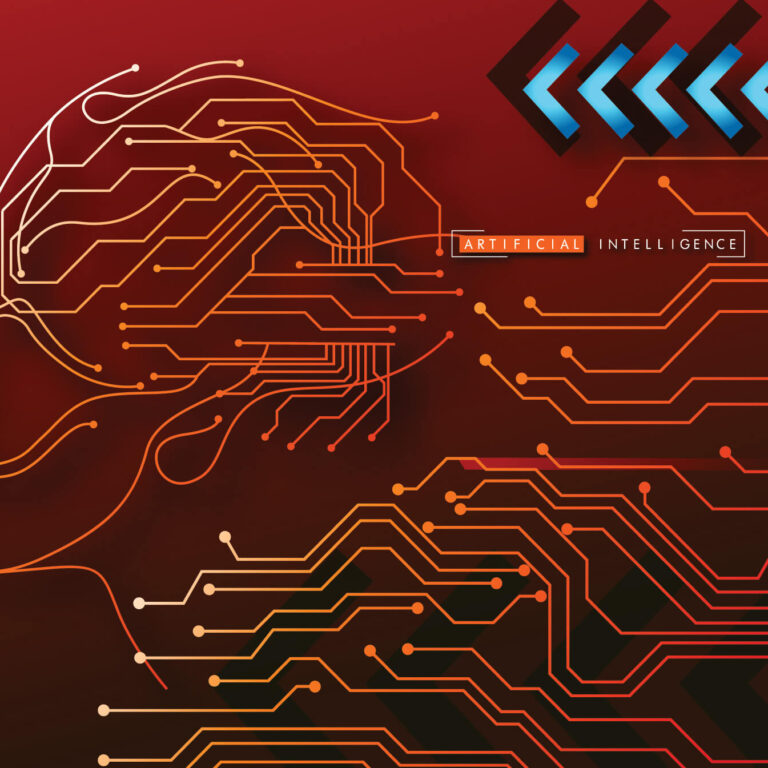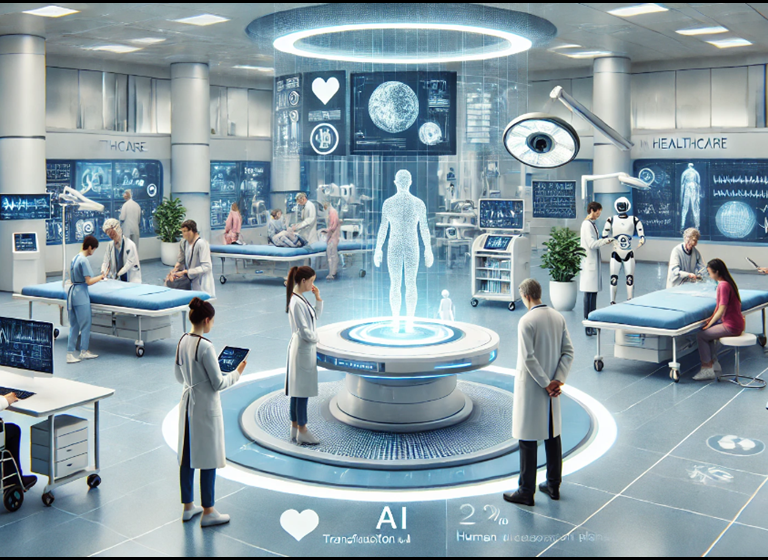
As we move deeper into a technology-first era, digital transformation is no longer an option—it’s a necessity. Businesses that embrace innovation and adapt quickly are better positioned to lead in competitive markets. From AI to quantum computing, 2025 is poised to be a pivotal year for digital disruption. Here are the top 10 digital transformation trends every business must follow in 2025 to stay ahead.
1. AI-Powered Everything
Artificial intelligence (AI) is becoming the foundation of modern business. In 2025, expect AI to be integrated in every core area:
- Customer Service: AI chatbots and virtual assistants deliver instant support and reduce response times.
- Data Analytics: AI-driven tools provide real-time insights, predict trends, and suggest strategic actions.
- Content Creation: AI tools generate articles, product descriptions, designs, and marketing copy.
- Personalized Experiences: AI tailors websites and product recommendations based on user behavior.
Why it matters: AI reduces operational costs, boosts efficiency, and enhances customer engagement through smart automation.
2. Hyperautomation
Hyperautomation goes beyond basic automation by integrating multiple technologies such as AI, RPA (Robotic Process Automation), and machine learning to automate complex business processes.
Use cases include:
- Automating repetitive tasks like data entry and invoice processing.
- Streamlining HR functions such as employee onboarding and payroll.
- Managing inventory, logistics, and order fulfillment in real-time.
Why it matters: Hyperautomation drives productivity, minimizes human error, and allows employees to focus on higher-value tasks.
3. Edge Computing Adoption
With the explosion of IoT devices and the rollout of 5G, edge computing allows data to be processed closer to its source, reducing latency and bandwidth usage.
Where it’s used:
- Smart Cities: For managing traffic systems and utilities.
- Healthcare: In wearable devices and remote patient monitoring.
- Manufacturing: Real-time monitoring and predictive maintenance of machinery.
Why it matters: Edge computing improves response times, enhances data security, and supports real-time decision-making.
4. Cybersecurity Mesh
Traditional centralized security models are no longer effective. The cybersecurity mesh provides a distributed security framework that protects users and data wherever they are.
2025 key features:
- Identity-first security: Verifying user identity at every access point.
- Modular protection: Securing devices, applications, and networks independently.
- AI-powered threat detection: Identifying and responding to threats in real-time.
Why it matters: With hybrid work environments and mobile access to data, decentralized security ensures holistic protection.
5. Sustainable Tech & Green IT
Digital transformation is not just about speed; it’s also about sustainability. Businesses are under pressure to reduce their carbon footprint through technology.
Examples:
- Energy-efficient hardware and data centers.
- Cloud computing to reduce paper and infrastructure waste.
- AI for optimizing energy consumption in buildings and factories.
Why it matters: Going green meets regulatory requirements, appeals to eco-conscious consumers, and cuts long-term operational costs.
6. Composable Applications
Composable applications are built from interchangeable components like APIs, services, and microservices. These apps are more flexible and easier to customize.
Benefits:
- Faster deployment: Quickly add or modify features.
- Greater scalability: Handle increased traffic or data without a complete rebuild.
- Enhanced agility: Respond to market changes and customer needs faster.
Why it matters: Businesses gain the ability to innovate continuously without expensive system overhauls.
7. Everything-as-a-Service (XaaS)
The XaaS model is transforming how businesses consume IT services. It refers to delivering everything—software, infrastructure, platforms, storage, and even security—as a subscription-based service over the cloud.
Examples:
- SaaS (Software as a Service): Applications like Salesforce, Google Workspace.
- PaaS (Platform as a Service): Developer platforms like Heroku, AWS Elastic Beanstalk.
- SECaaS (Security as a Service): Cloud-based cybersecurity tools.
Why it matters: XaaS reduces capital expenses, allows for scalable growth, and provides ongoing access to the latest technology.
8. 5G-Powered Innovation
5G is more than faster mobile networks—it’s a driver of innovation in every industry.
Impacts:
- Retail: AR-powered virtual fitting rooms.
- Healthcare: Real-time remote surgeries and diagnostics.
- Entertainment: Seamless VR/AR gaming and streaming.
Why it matters: 5G unlocks ultra-low latency and massive connectivity, enabling innovations that weren’t possible with previous networks.
9. Digital Twins & Simulation
Digital twins replicate real-world systems in a digital environment to monitor performance and test changes without real-world risks.
Industries using it:
- Manufacturing: Simulating production lines and machinery.
- Healthcare: Modeling patient conditions or treatment outcomes.
- Urban Planning: Designing and optimizing smart infrastructure.
Why it matters: Digital twins enhance operational efficiency, reduce maintenance costs, and support data-driven decisions.
10. Quantum Computing Readiness
Quantum computing is still developing, but its future potential is massive. Businesses must begin preparing now by understanding how it could affect their industry.
Why it matters:
- Finance: Perform complex risk assessments in seconds.
- Pharmaceuticals: Speed up drug discovery through molecular simulation.
- Cybersecurity: Develop quantum-resistant encryption methods.
Why businesses should care: Quantum computing could disrupt current technologies, and early adopters will have a significant competitive edge.
These Top 10 Digital Transformation Trends can grow your busieness to much higher levels in a very short time.






